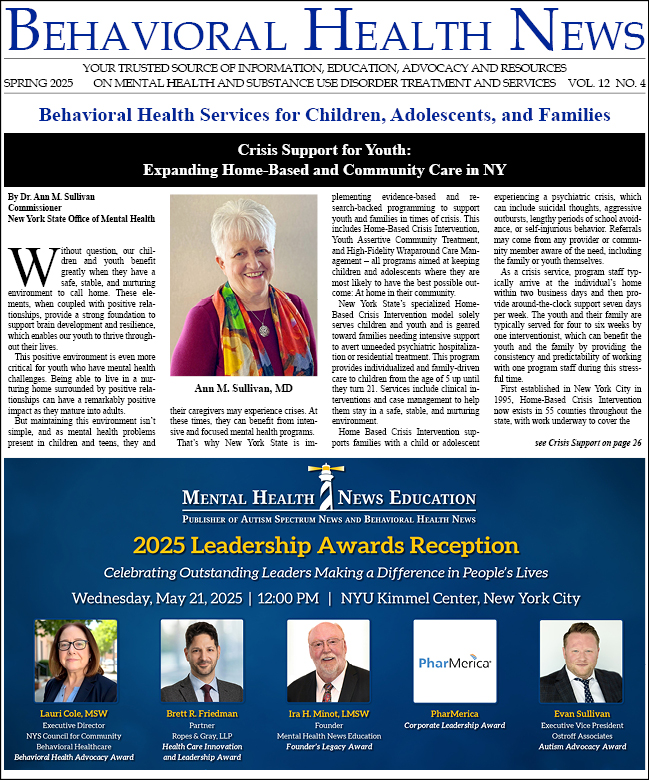-
Animal Assisted Therapy for Vulnerable Youth
For almost two decades, North Shore Child & Family Guidance Center has been utilizing Animal Assisted Therapy (AAT) in outpatient mental health work with youths and their families, working in partnership with local canine and equine organizations. An adjunct to traditional therapy, AAT relies...
-
Innovation and Efficacy Modeled at ANDRUS: Meeting a Vulnerable Population Using a Sensory and Body Regulation Approach
Meeting a Vulnerable Population Where They are At Some children experience mental and behavioral difficulties that make their daily life a challenge. They struggle to regulate their emotions and cope with a world that isn’t always receptive to their reactive behavioral outbursts. At risk...
-
Helping Kids Make Real Progress: A Systems Approach
There is a set of givens supported by years of research and the evolution of Children’s Systems of Care that informs the development of effective care for children with intellectual and behavioral challenges: (A) The earlier services begin the better; (B) Services need to be tailored to the...
-
“Children’s System of Care” in Westchester County, New York
The System of Care concept for children and adolescents with mental health challenges and their families was first published in 1986 in an article by Beth Stroul and Robert Friedman. They articulated a definition for a System of Care along with a framework and philosophy to guide its...
-
Circle of Security Parenting Program: A Wise Early Intervention Investment to Promote Healthy Futures
As New York State transitions children, youth, and family services into Medicaid managed care, there must be far greater attention, capacity, and investment in tools and strategies that promote early childhood development. According to The Heckman Equation, investment in early development is a...
-
Early Identification of Childhood Disorders in Primary Care
Primary care providers are usually the first clinicians to identify behavioral health problems in children. Children with disruptive behavioral problems show symptoms during their primary care visits and their families rely on their primary providers for information, resources and...
-
Improving Children’s Health by Focusing on Value
New York State is well down the path to instituting significant changes in how the State pays for health care for low-income and disabled individuals, many of them children. Like many other states, New York is testing new payment methodologies in an effort to achieve positive changes in how health...
-
It Takes a Village
When we hear the phrase “It takes a village to raise a child,” we think of the African apologue, or maybe Hillary Clinton’s book about larger societal responsibilities. But in the children’s behavioral health system, it is also true. Throughout the history of this system, there has been a...
-
Partnerships Provide Effective Alternatives to Unnecessary Inpatient Care for Children and Youth
There is a high personal, psychosocial and economic toll for children and youth who experience mental, emotional and behavioral disorders. These challenges also impact their families and the communities in which they live, study, and grow up. Research suggests that in any given year, between 14 and...
-
SIMHS SafeTY.net Early Intervention Program Fills Gaps in Services for Staten Island Youth Battling Trauma-Related Substance Use/Abuse
For more than a decade, Staten Island has been harboring a shameful secret that is only recently coming to light. Our Island outranks each borough, as well as the whole of New York City and State, in the rate of adolescent drug and alcohol abuse, including binge drinking and use of prescription...







